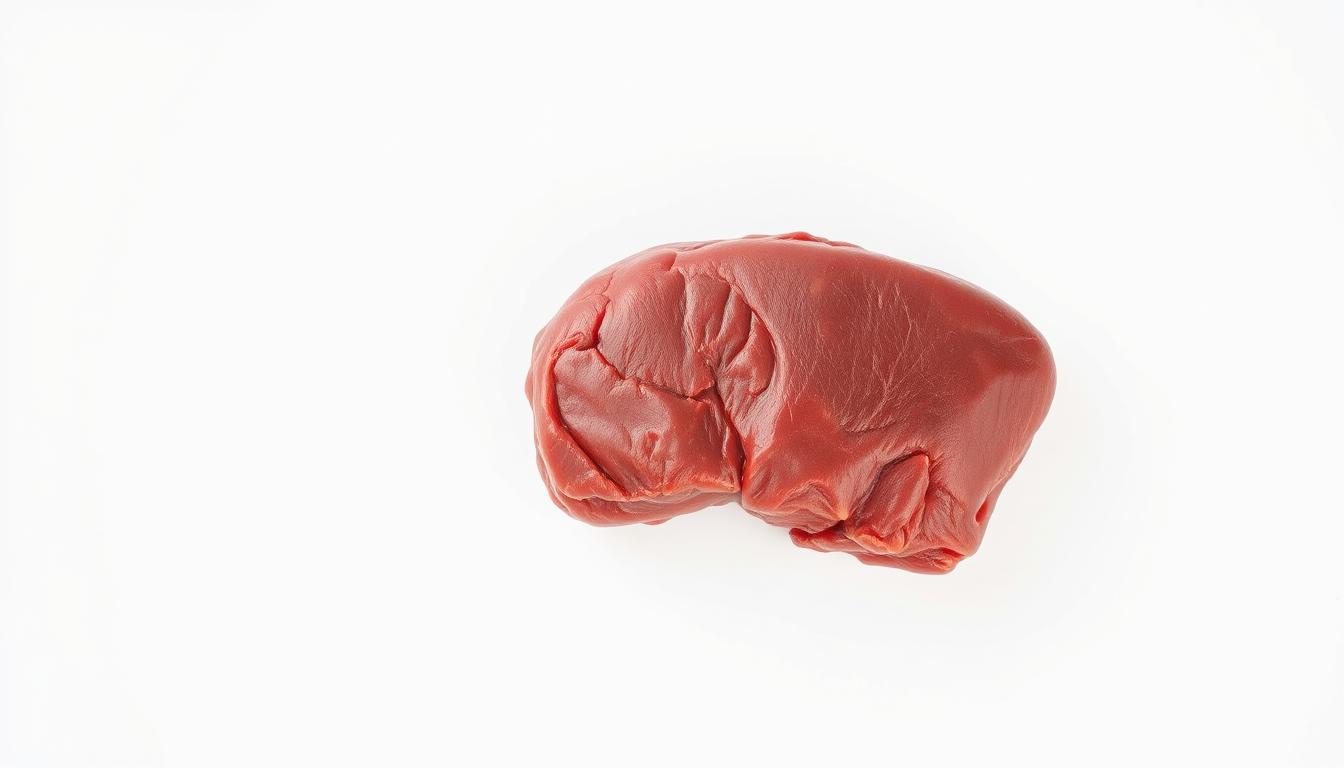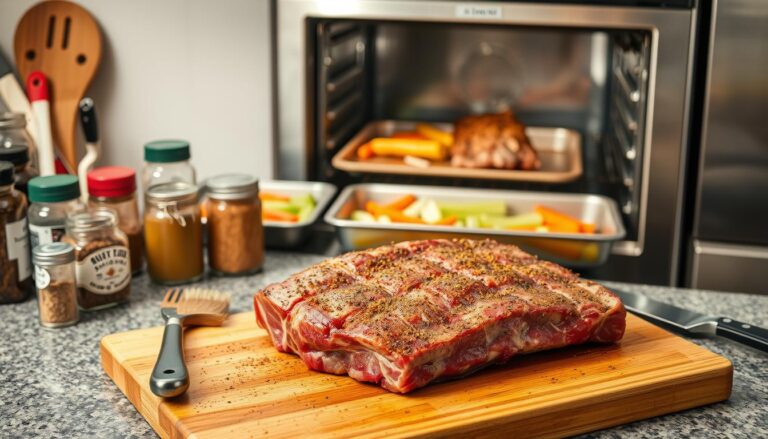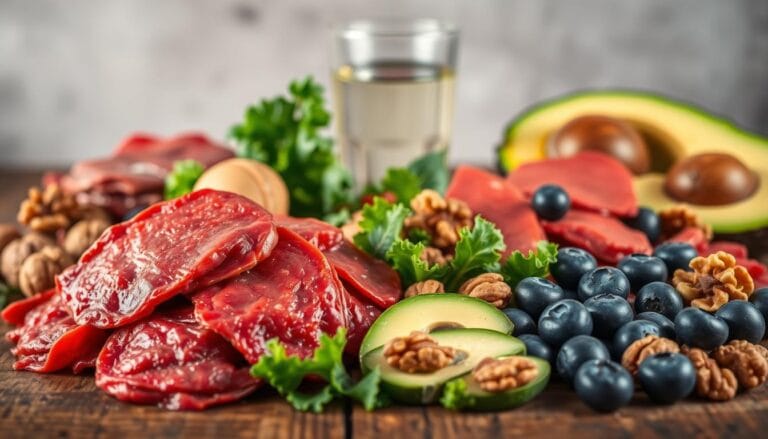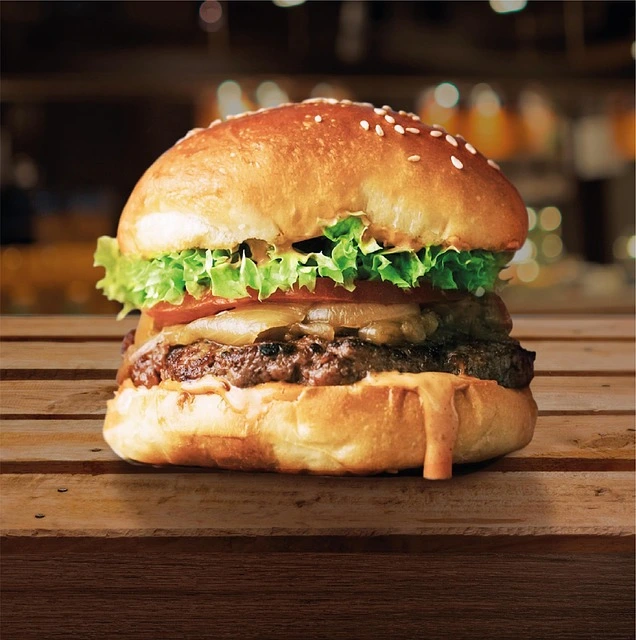Beef Liver Nutrition Facts: Essential Info for You
Have you ever wondered why your grandparents swore by eating organ meats? There’s a reason this traditional food has stood the test of time. Packed with essential nutrients, it delivers more health benefits in a single serving than most superfoods combined.
Despite its powerhouse status, many people hesitate to include it in their diet. Some worry about taste, while others question its safety. But what if we told you this often-overlooked food contains nearly 1,000% of your daily vitamin B12 needs in just one portion?
Modern diets often overlook this nutritional gem, favoring leaner cuts instead. Yet ounce for ounce, few foods compare to its impressive profile. From supporting energy levels to boosting immunity, the advantages might surprise you.
Table of Contents
Beef Liver Nutrition Facts: Essential Info for You
Key Takeaways
- Contains exceptionally high levels of vitamin B12 and vitamin A
- Provides 23g of protein per 4oz serving with minimal calories
- Rich in iron and selenium for optimal body function
- Addresses common misconceptions about safety and taste
- Offers more nutrients per bite than most common foods
Why Beef Liver Is a Nutritional Powerhouse
Few foods pack as much nutritional punch per ounce as this underrated superfood. A 4-ounce serving delivers staggering amounts of vitamins minerals, including 988% of your daily B12 and 731% of vitamin A. It’s a source of energy and vitality, often overlooked in modern diets.
Key Nutrients in a Single Serving
What makes it stand out? For starters, it beef liver contains 67mcg of B12—enough to exceed your weekly needs. The iron content (5.54mg) outperforms grass-fed steak, and its copper levels (488% DV) dwarf salmon’s 5%.
Unlike plant-based proteins, it provides all nine essential amino acids. With 23g of protein per serving, it rivals chicken breast but offers triple the micronutrients.
Comparing Beef Liver to Other Protein Sources
Stack it against common options, and the differences are stark. Chicken breast may have 26g of protein, but it lacks the iron, zinc, and vitamin A this food delivers. Even salmon can’t match its choline (77% DV) or heme iron, which your body absorbs more efficiently.
For a source of concentrated nourishment, few choices compare. Whether you’re fueling workouts or boosting immunity, its profile is unmatched.
Beef Liver Nutrition Facts: A Detailed Breakdown
What if one food could deliver a week’s worth of essential nutrients in a single meal? A 4-ounce portion of this superfood does just that, offering a rare balance of macronutrients and vitamins.
Calories, Protein, and Macronutrients
With only 153 calories per serving, it’s a lean choice. You’ll get 23g of high-quality protein—enough to rival chicken breast—plus 4.1g of fats (mostly heart-healthy unsaturated types).
The biological value of its protein is exceptional. It contains all nine essential amino acids, making it a complete source for muscle repair and energy.
| Nutrient | Per 4oz Serving | % Daily Value |
|---|---|---|
| Protein | 23g | 46% |
| Fat | 4.1g | 5% |
| Carbs | 4.4g | 2% |
Vitamins and Minerals
One serving exceeds your daily needs for vitamin B12 (988%) and vitamin A (731%). It’s also packed with copper, which supports iron absorption and brain health.
“Organ meats like liver are nature’s multivitamin, offering nutrients in their most bioavailable forms.”
Compare its vitamin A content to sweet potatoes: 6,582mcg vs. 1,403mcg per serving. Even its selenium (44.9mcg) boosts thyroid function better than most seafood.
Here’s why these minerals matter:
- Copper: Vital for energy production and nerve function.
- Iron: Fights fatigue with 5.54mg per serving.
- Selenium: Protects cells with antioxidant properties.
Top Health Benefits of Eating Beef Liver
Struggling with fatigue or brain fog? The solution might be on your plate. Packed with essential nutrients, this superfood offers unmatched health benefits for your body and mind.
Supports Energy and Brain Function
Feeling drained? The high B12 content (988% DV per serving) fuels red blood cell production, combating fatigue. It also sharpens focus by supporting nerve function.
Choline, another key nutrient, enhances cognitive performance. Studies show it may reduce brain fog and improve memory retention.
Boosts Iron Levels and Fights Anemia
With 5.54mg of heme iron per serving, it’s a powerhouse for fighting anemia. Unlike plant-based iron, heme iron absorbs 3x faster.
This makes it ideal for:
- Athletes needing endurance
- Women with heavy menstrual cycles
- Vegetarians transitioning back to meat
Strengthens Bones and Immunity
Vitamin A isn’t just for eyesight—it fortifies your immune system by enhancing mucosal barriers. One serving covers 731% of your daily needs.
Copper, often overlooked, teams up with vitamin C to build collagen. This duo supports bone density and joint health, reducing disease risks like osteoporosis.
“Nutrients in liver work synergistically—like vitamin A and copper—to optimize body functions you rarely think about.”
Potential Risks and Who Should Avoid Beef Liver
While packed with benefits, some individuals should approach this food with caution. Its concentrated nutrient profile, though advantageous for many, may pose risks for specific groups or when consumed excessively.
Vitamin A Toxicity Concerns
A single ounce provides 2,650mcg of vitamin A—exceeding the safe upper limit for pregnant women (3,000mcg RAE/day). Overconsumption may lead to nausea, headaches, or birth defects.
For most adults, one serving weekly is safe. However, those with conditions like hypervitaminosis A should avoid it entirely.
High Cholesterol and Purine Content
With 310mg of high cholesterol per serving (103% DV), moderation is key. Note: dietary cholesterol’s impact on blood levels varies by individual.
Purines (436mg/100g) can trigger gout flare-ups. Compare sources below:
| Food | Purines per 100g |
|---|---|
| Beef liver | 436mg |
| Chicken breast | 68mg |
| Salmon | 170mg |
Special Considerations for Sensitive Groups
People with gout or Wilson’s disease (a copper metabolism disorder) should avoid it. Pregnant women must monitor intake to prevent vitamin A excess.
“Balance is critical—nutrient density doesn’t negate potential risks for vulnerable populations.”
Always consult a healthcare provider if unsure about dietary changes, especially for these risk groups.
How to Select and Store Beef Liver
Want to get the most out of this nutrient-packed organ meat? Start by picking the freshest option. Quality matters—whether you buy it fresh or frozen impacts taste, texture, and nutrient retention.
Fresh vs. Frozen: What to Look For
Fresh cuts should have a uniform deep-red color and a moist (not slimy) surface. A faint metallic scent is normal; sour odors mean it’s spoiled. Grass-fed varieties are a superior source of omega-3s.
Frozen options last 3–4 months at 0°F. Check for freezer burn or ice crystals, which signal poor packaging. Vacuum-sealed bags preserve quality better than butcher paper.
Smart Storage Tips
Keep fresh cuts in the coldest fridge section and use within 1–2 days. For longer storage:
- Blanch slices before freezing to prevent texture changes
- Thaw overnight in the fridge or use a cold-water bath for quicker results
- Follow USDA FoodKeeper App guidelines for organ meat shelf life
Pair these steps with a balanced diet to maximize benefits without waste.
Simple Ways to Include Beef Liver in Your Diet
Looking for easy ways to add this powerhouse food to your meals? Many avoid it due to the strong flavor, but these preparation methods transform it into delicious foods you’ll enjoy. From classic recipes to sneaky additions, here’s how to reap the benefits without the hassle.
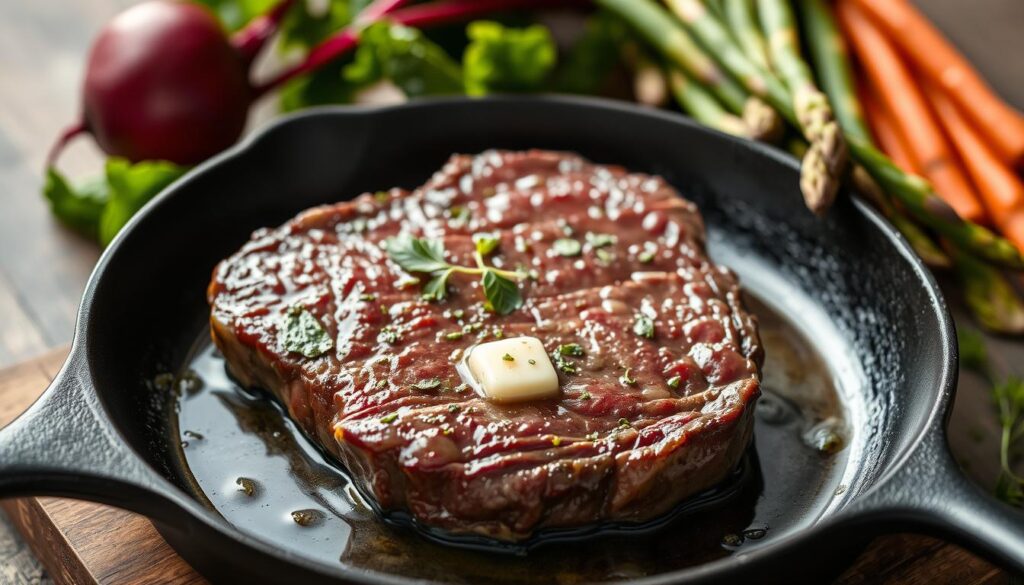
Pan-Frying with Onions (Classic Recipe)
Caramelized onions balance the robust taste perfectly. Slice the meat thin (¼ inch) and cook at medium-high heat for just 2 minutes per side. Overcooking makes it tough—160°F internal temperature is ideal.
Boost flavor with spices like smoked paprika or garlic powder. Serve with mashed potatoes for a comforting meal that hides any metallic notes.
Blending into Ground Meat for Burgers
Mix 3oz with every pound of ground meat—the 1:4 ratio keeps flavors mild. The texture disappears completely in meatballs or meatloaf. This trick works especially well for:
- Weeknight spaghetti sauces
- Stuffed peppers
- Homemade sausage patties
Soaking in Milk to Reduce Bitterness
Milk’s lactic acid neutralizes metallic compounds. Submerge slices in whole milk for 30-60 minutes before cooking. Rinse and pat dry—you’ll notice a milder taste immediately.
For extra tenderness, add a splash of lemon juice. This method works wonders for pâtés or chopped liver spreads too.
Not ready for whole cuts? Desiccated capsules offer the same diet advantages without prep work. Whether you fry, blend, or soak, these techniques make it easier than ever to include in your diet.
Beef Liver vs. Other Organ Meats: How It Compares
Not all organ meats are created equal—some pack more punch than others. While each type offers unique benefits, understanding their differences helps you choose the best fit for your diet and palate.
Nutritional Showdown: Cholesterol and Key Minerals
Chicken liver tops the chart with 484mg of cholesterol per serving—56% higher than beef. Lamb liver, though similar in cholesterol (436mg), delivers 40% more zinc, vital for immunity. Pork liver falls in the middle (340mg) but has a stronger mineral profile.
| Type | Cholesterol (mg/serving) | Key Nutrient |
|---|---|---|
| Chicken | 484 | High folate |
| Lamb | 436 | Rich in zinc |
| Pork | 340 | More B vitamins |
“Lamb liver is a stealth source of zinc, while chicken liver shines for folate—a must for prenatal health.”
Flavor and Texture Spectrum
Chicken liver is the mildest, often described as creamy. Beef liver has a denser texture and earthy notes. Pork liver? It’s the boldest, with a bitter edge that pairs well with acidic ingredients like vinegar or apples.
For beginners, chicken liver is the easiest gateway. Adventurous eaters might prefer lamb’s velvety texture or beef’s robust flavor. Cultural prep methods—like French pâté or Jewish chopped liver—highlight these differences beautifully.
Ultimately, the best choice depends on your goals. Prioritize nutrients? Opt for lamb. Prefer subtlety? Chicken wins. Balancing taste and health ensures you enjoy these powerhouse meats long-term.
Common Myths About Beef Liver Debunked
Myths about this superfood persist, but science tells a different story. From outdated cholesterol fears to unfounded toxin worries, misinformation keeps many from its health benefits. Let’s dismantle the top misconceptions with evidence.
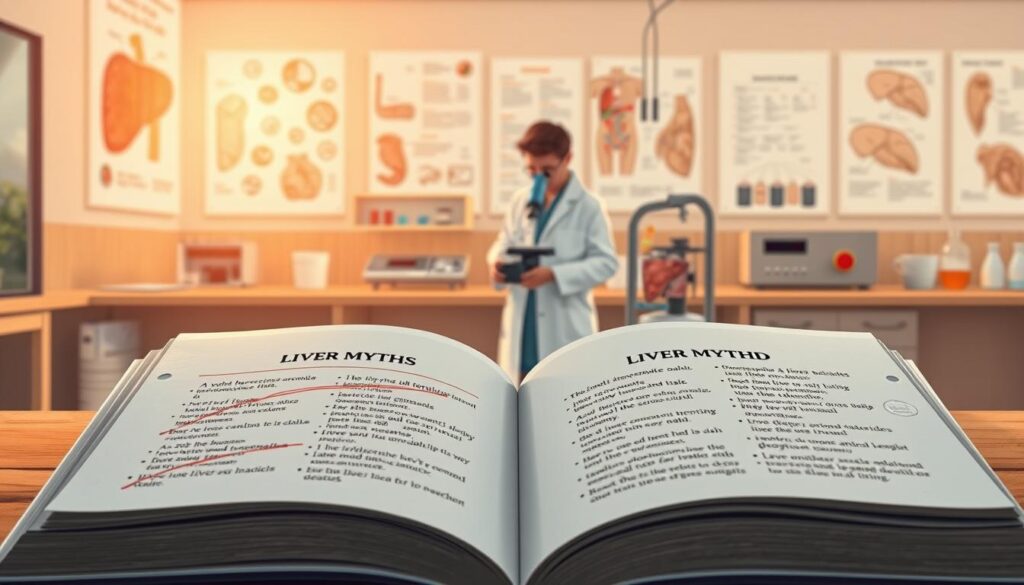
Cholesterol Misconceptions
For decades, dietary cholesterol was vilified—but 70% of people see little impact on blood cholesterol levels. The 2020 Dietary Guidelines confirm that saturated fats matter more than cholesterol intake.
Compare cholesterol content in common proteins:
| Food | Cholesterol (mg/serving) | % Daily Value |
|---|---|---|
| Beef liver | 310 | 103% |
| Eggs (2 large) | 372 | 124% |
| Shrimp (4oz) | 220 | 73% |
“The liver produces cholesterol daily—dietary intake often has minimal effect unless metabolic issues exist.”
Does It Store Toxins?
Contrary to myth, the body’s detox organ filters toxins but doesn’t stockpile them. Hepatocytes break down harmful compounds, which exit via bile or urine. USDA and FDA protocols ensure safety when sourced responsibly.
Key facts about sourcing:
- Regenerative farms minimize antibiotic use, reducing residue risk.
- Grass-fed options have higher omega-3s and fewer contaminants.
- FDA inspections enforce strict standards for organ meats.
Fear shouldn’t overshadow facts. With proper selection, this nutrient-dense food supports health without hidden dangers.
Conclusion: Is Beef Liver Right for You?
Adding this nutrient-dense food to your diet can offer impressive health perks. Just one serving delivers a week’s worth of key vitamins and minerals. But balance is crucial—limit intake to 1–2 servings weekly.
Pregnant women or those with gout should consult a doctor first. For others, it’s a budget-friendly way to boost energy and immunity. Try pan-frying with onions or blending into ground meat for milder flavors.
While there’s some risk with overconsumption, the benefits outweigh concerns for most people. Experiment with recipes to find what works for your taste buds and lifestyle.
FAQ
Is beef liver high in cholesterol?
Can eating beef liver help with iron deficiency?
Does beef liver have more vitamin B12 than other foods?
Is it safe to eat beef liver during pregnancy?
How can I make beef liver taste less bitter?
What’s the best way to store fresh liver?
Are there risks of vitamin A toxicity from eating too much liver?
How does beef liver compare to chicken liver?
Can people with gout eat beef liver?
Does cooking affect the nutrient value of liver?
For more cooking tips, stay connected with us. We also recommend the cookbook Skinnytaste Simple: Easy, Healthy Recipes with 7 Ingredients or Fewer
For more Recipes about Beef?
Did You try our recipe ?
There are no reviews yet. Be the first one to write one.
